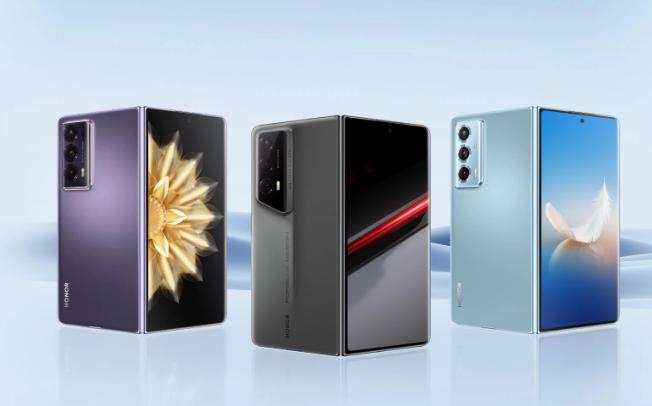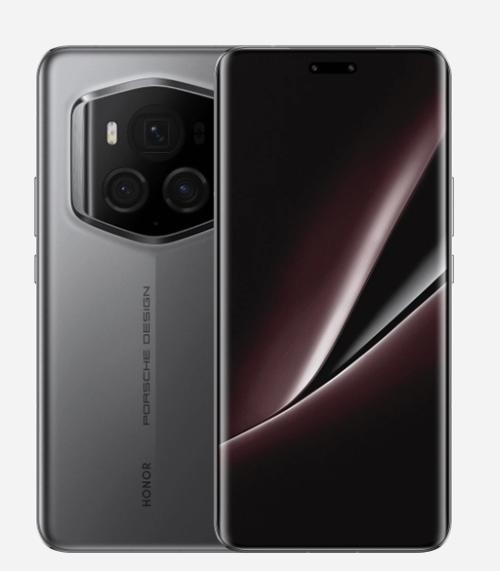Foldable phones have marked a significant shift in smartphone design, blending innovative technology with user convenience. From the initial concept of a foldable screen to today’s highly engineered devices, the journey has been remarkable. The evolution of mobile devices has been rapid, and foldable phones represent the latest leap forward. This blog explores the path from early ideas to the advanced designs we see today, examining the key innovations that have shaped their development and their growing popularity. We will also explore what the future might hold for this transformative technology.

What is a Foldable Smartphone?
A foldable smartphone is an innovative type of mobile device that features a foldable screen and hinge mechanism, allowing it to transition between a phone and a tablet. Equipped with flexible OLED or AMOLED screens, these phones can bend or fold without damage, offering a larger display area when the device is unfolded—ideal for multitasking, watching videos, and gaming. The hinge is a crucial component, enabling smooth transitions between different modes. Foldable smartphones come in multiple form factors, including clamshell designs that fold like traditional flip phones and book-like designs that open into a tablet-like screen. These devices typically incorporate the latest technology, such as high-performance processors, large batteries, and advanced software features, providing a top-tier user experience.
The Journey of Foldable Phone Design: Early Concepts to Reality
The journey of foldable phone design began with conceptual ideas that pushed the boundaries of typical smartphone capabilities. Early concepts focused on flexible displays that could fold without damage. As technology advanced, the implementation of flexible OLED and AMOLED screens made these initial ideas feasible. The introduction of durable, advanced hinge mechanisms furthered the movement from concept to reality. Today, foldable phones like the HONOR Magic V2 and HONOR Magic V3 exemplify the blend of cutting-edge technology and design innovation, providing users with devices that offer enhanced productivity, multitasking, and portability.
Key Innovations Shaping Foldable Phones Today
Foldable Screens: Flexible OLED and AMOLED Technology
Foldable screens are central to the innovation behind foldable phones. These are primarily based on flexible OLED and AMOLED technology, which allows the screens to bend and fold without damage. The development of these screens has taken years, involving significant advancements in materials science. Flexible OLED displays are constructed with high-strength polymers and bonding techniques that maintain screen integrity even after thousands of folds. This screen technology delivers vibrant colors, deep blacks, and energy efficiency. Moreover, it provides a seamless viewing experience, whether the device is folded or unfolded. For instance, popular models like the HONOR Magic V2 use this technology to offer users a large, immersive display that can easily transition to a more compact form, making them practical for both entertainment and productivity purposes.
Advanced Hinge Mechanisms for Durability and Smooth Folding
The hinge mechanism is a critical innovation in the design of foldable phones, ensuring durability and smooth folding. Early designs faced challenges such as wear and tear and debris accumulation, which could damage the screen. Modern foldable phones use advanced, multi-gear hinge systems made from high-durability materials like titanium and steel. These hinges are engineered to withstand repeated folding and unfolding, with some models rated for hundreds of thousands of cycles. For example, the HONOR Super-light Titanium Hinge in the HONOR Magic V2 ensures up to 400,000 folds, offering users a worry-free experience. The design also incorporates debris-resistant features, preventing particles from damaging the mechanism. These advanced hinges not only enhance durability but also contribute to the overall sleek and compact design of the foldable phones.
Multi-form Factors: Clamshell, Book-like, and More
The multi-form factors of foldable phones offer diverse designs that cater to various user preferences. Clamshell designs fold vertically like traditional flip phones, providing compactness while offering a full display when opened. This form factor is popular among users who prefer a smaller, more pocket-friendly device. On the other hand, book-like designs open horizontally, resembling a tablet. These devices, such as the HONOR Magic Vs, offers a larger screen area, ideal for multitasking and media consumption. Additionally, some models explore unique form factors, combining vertical and horizontal folds or incorporating secondary displays for even more versatility. These varying designs illustrate how foldable phones can adapt to different user needs, providing flexibility in both form and function.
Why Are Foldable Phones Gaining Popularity?
Enhanced Multitasking and Productivity Benefits
One of the primary reasons foldable phones are gaining popularity is their enhanced multitasking and productivity benefits. The larger, foldable displays enable users to run multiple apps simultaneously, dramatically improving productivity. For instance, you can browse the web while video calling or take notes during a virtual meeting without switching devices. The split-screen functionality and app continuity features of foldable phones, such as those seen in the HONOR Magic Vs, allow for fluid transitions from one task to another. This seamless experience is highly valued by professionals and multitaskers alike, making these devices essential tools for balancing work and personal tasks efficiently.
Portability with Larger Display Options
Despite their larger displays, foldable phones maintain impressive portability when folded. This dual nature allows users to enjoy the benefits of a large screen without sacrificing the convenience of a compact device. For example, when unfolded, the HONOR Magic V2 offers a tablet-like experience with a large, immersive screen, perfect for media consumption, gaming, and multitasking. When folded, it transforms into a compact, pocket-friendly device. This combination of portability and screen size offers a versatile solution for users who need a larger display for certain activities but prefer the convenience of a smaller phone for everyday use.
Cutting-edge Technology and Features
Foldable phones are often at the forefront of cutting-edge technology and features. They usually incorporate powerful processors, high-resolution cameras, advanced software, and enhanced battery capacities. For instance, the HONOR Magic V2 RSR Porsche Design includes a Snapdragon 8 Gen 2 processor for superior performance, a 50MP main camera for stunning photography, and features like HONOR’s Eye Protection Technology for comfortable viewing. These phones also introduce innovative materials and components, such as silicon-carbon batteries and ultra-light titanium hinges, setting new standards in technology. The blend of advanced features and pioneering technology makes foldable phones highly appealing to tech enthusiasts and early adopters who seek the best in mobile innovation.

What Does the Future Hold for Foldable Phone Design?
Potential for Thinner, Lighter Designs
The future of foldable phone design looks promising, with potential advancements leading to thinner, lighter devices. Manufacturers are continuously working on reducing the weight and thickness of foldable components without compromising durability. Innovations in material science, such as the use of ultra-thin glass and advanced polymers, are expected to play a key role. The use of lightweight titanium for hinges and streamlined internal designs can further decrease the overall bulk of these devices. Future models could feature even slimmer profiles, making foldable phones more comparable to traditional smartphones in terms of thickness and weight while maintaining their versatile form factors.
Battery Innovations and Longer Durability
Battery technology is another area set for significant advancements in foldable phones. Current models like the HONOR Magic V2 already boast impressive battery life with their silicon-carbon batteries. Future developments could see even more efficient energy storage solutions, such as solid-state batteries, which offer higher energy density and faster charging times. These innovations will likely lead to longer battery life and improved durability, ensuring that foldable phones can handle the power demands of their advanced features. Enhanced battery technology will contribute to making foldable phones more reliable and convenient for users who rely on their devices throughout the day.
Expected Advancements in Screen and Hinge Technologies
Screen and hinge technologies are expected to see significant advancements in the future of foldable phone designs. The next generation of foldable screens may include even more durable and flexible materials, offering higher resolutions and better touch sensitivity. Developments in hinge technology will likely focus on reducing mechanical wear and enhancing protection against dust and debris. Future hinges may also support more complex folding mechanisms, potentially allowing for new form factors and more versatile usage scenarios. These advancements will contribute to the overall robustness and user experience of foldable phones, maintaining their position at the cutting edge of smartphone innovation.
Conclusion
The evolution of foldable phone design is a testament to the relentless innovation in the smartphone industry. From early concepts to today’s advanced models, foldable phones blend functionality and creativity, offering enhanced productivity, portability, and cutting-edge technology. As manufacturers continue to push the boundaries, we can expect even more sophisticated and durable designs in the future. The future of foldable phones holds exciting possibilities, promising thinner, lighter devices with longer battery life and improved screen and hinge technologies. These advancements will continue to transform how we interact with our mobile devices, making foldable phones an essential part of our digital lives.











